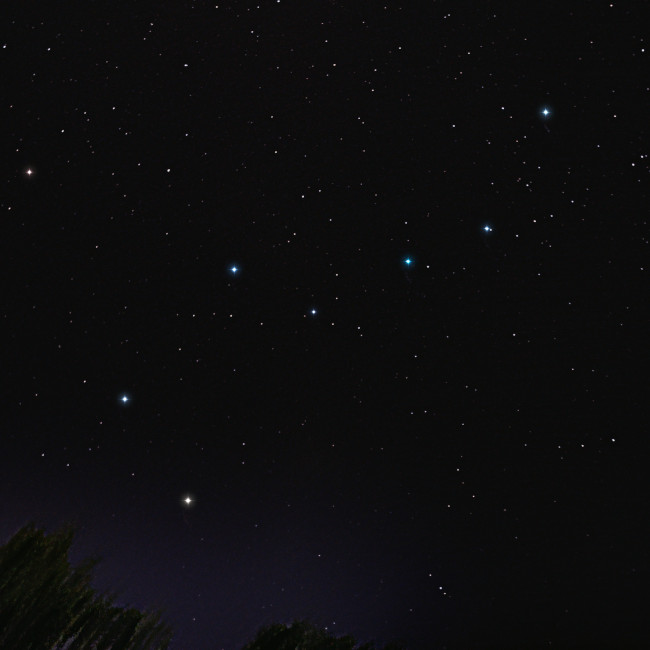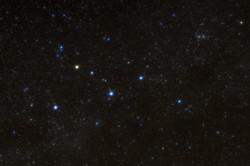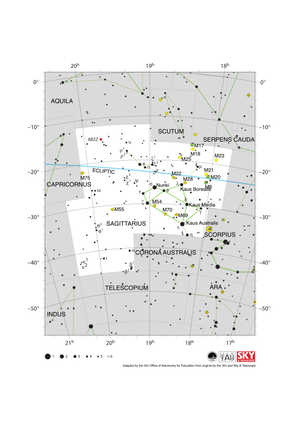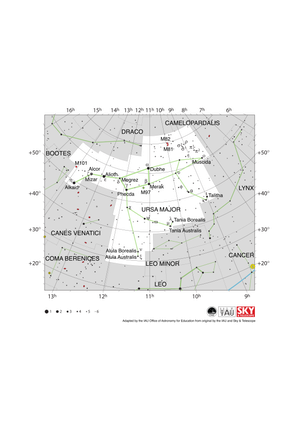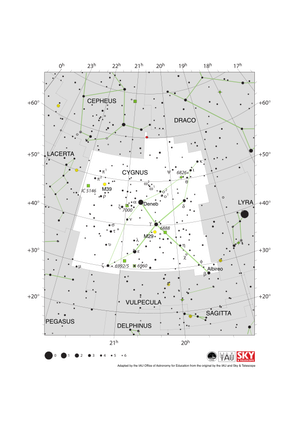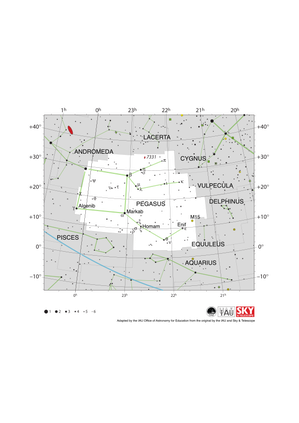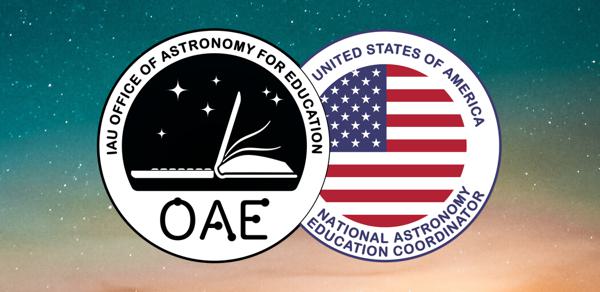Glossarbegriffe: Asterismus
Description: Die meisten der hellen Sterne am Nachthimmel wurden in Mustern zusammengefasst, die als Sternbilder bezeichnet werden. Neben den offiziellen Sternbildern, die von der Internationalen Astronomischen Union definiert wurden, gibt es jedoch auch Sterngruppierungen, die zwar Muster bilden, aber keine offiziellen Sternbilder sind: Diese werden Asterismen genannt.
Der wohl bekannteste Asterismus ist der Große Wagen - eine Gruppe von Sternen, die Teil des größeren Sternbilds Großer Bär ist. Weitere Beispiele für Asterismen, die von der nördlichen Halbkugel aus sichtbar sind, sind das Herbstviereck oder das Sommerdreieck.
Zugehörige Glossarbegriffe:
See this term in other languages
Term and definition status: The original definition of this term in English have been approved by a research astronomer and a teacher The translation of this term and its definition is still awaiting approval
The OAE Multilingual Glossary is a project of the IAU Office of Astronomy for Education (OAE) in collaboration with the IAU Office of Astronomy Outreach (OAO). The terms and definitions were chosen, written and reviewed by a collective effort from the OAE, the OAE Centers and Nodes, the OAE National Astronomy Education Coordinators (NAECs) and other volunteers. You can find a full list of credits here. All glossary terms and their definitions are released under a Creative Commons CC BY-4.0 license and should be credited to "IAU OAE".
If you notice a factual or translation error in this glossary term or definition then please get in touch.
Zugehörige Medien
The Big Dipper in Yellowstone, by Alex Conu, Norway
Bildnachweis: Alex Conu/IAU OAE
License: CC-BY-4.0 Creative Commons Namensnennung 4.0 International (CC BY 4.0) icons
Großer Wagen
Bildnachweis: Arya Anthony/IAU OAE
License: CC-BY-4.0 Creative Commons Namensnennung 4.0 International (CC BY 4.0) icons
Abschied vom Sommerdreieck, das früh im Winter abends untergeht
Bildnachweis: Kouij Ohnishi/IAU OAO
License: CC-BY-4.0 Creative Commons Namensnennung 4.0 International (CC BY 4.0) icons
Porträt einer Fledermaus
Bildnachweis: Thanakrit Santikunaporn/IAU OAE
License: CC-BY-4.0 Creative Commons Namensnennung 4.0 International (CC BY 4.0) icons
Die Sterne und das Meer gemeinsam bewachen
Bildnachweis: Likai Lin/IAU OAU
License: CC-BY-4.0 Creative Commons Namensnennung 4.0 International (CC BY 4.0) icons
Related Diagrams
Sagittarius Constellation Map
Bildnachweis: Adapted by the IAU Office of Astronomy for Education from the original by IAU/Sky & Telescope
License: CC-BY-4.0 Creative Commons Namensnennung 4.0 International (CC BY 4.0) icons
Ursa Major Constellation Map
Bildnachweis: Adapted by the IAU Office of Astronomy for Education from the original by IAU/Sky & Telescope
License: CC-BY-4.0 Creative Commons Namensnennung 4.0 International (CC BY 4.0) icons
Aquila Constellation Map
Bildnachweis: Adapted by the IAU Office of Astronomy for Education from the original by IAU/Sky & Telescope
License: CC-BY-4.0 Creative Commons Namensnennung 4.0 International (CC BY 4.0) icons
Cygnus Constellation Map
Bildnachweis: Adapted by the IAU Office of Astronomy for Education from the original by the IAU and Sky & Telescope
License: CC-BY-4.0 Creative Commons Namensnennung 4.0 International (CC BY 4.0) icons
Pegasus Constellation Map
Bildnachweis: Adapted by the IAU Office of Astronomy for Education from the original by the IAU and Sky & Telescope
License: CC-BY-4.0 Creative Commons Namensnennung 4.0 International (CC BY 4.0) icons

